#woodcutwednesday
Text

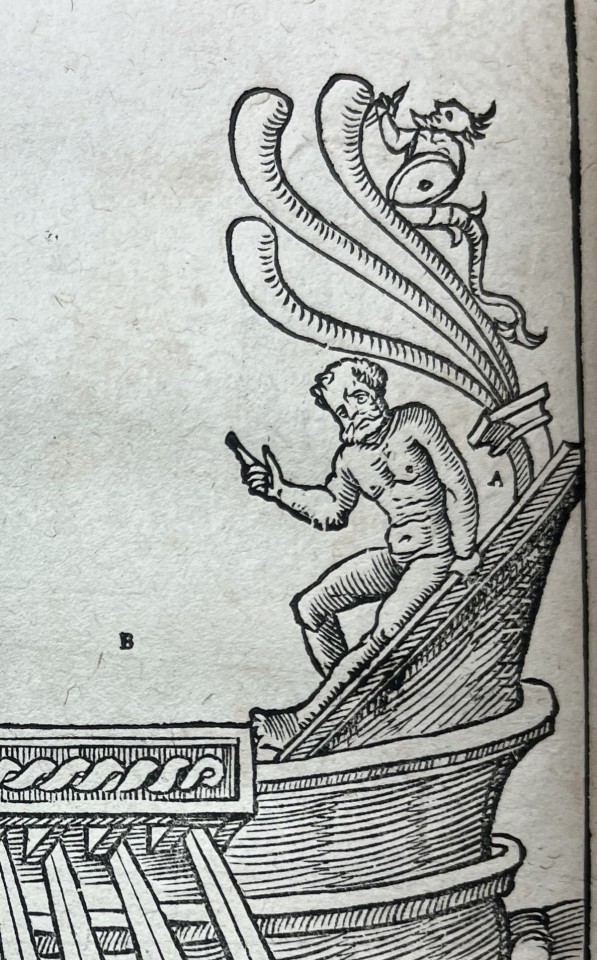



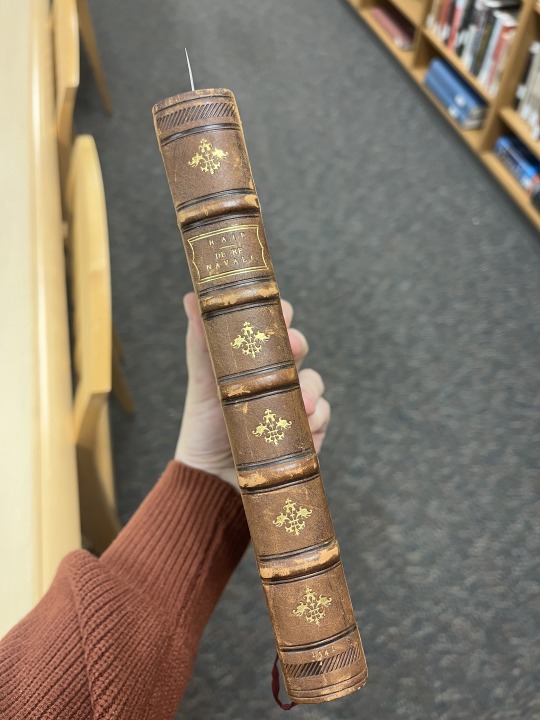
Some woodcuts for you from our 1541 Lazare de Baïf text, Annotationes in legem II De captiuis & postliminio reuersis. While he discusses the rights of captured soldiers and their later return to freedom, he gets a bit distracted by a reference to ships and explores Greek and Roman naval ships for most of the book.
#riesenfeld center#umn#university of minnesota law library#university of minnesota law#rare books#umn law#special collections#old books#law school#greek#roman#naval art#ships#1500s#16th century#woodcut illustrations#woodcut#woodcutwednesday
78 notes
·
View notes
Text

From: Rowe, Nicholas, 1674-1718. Plays. London : Printed for J. and R. Tonson and H. Lintot, 1736
PR3671.R5 A7 1736
#woodcut#capitalletter#initialcapital#letter#lettera#a#1730s#early18thcentury#english#woodcutwednesday#rarebooks#specialcollections#libraryofva
169 notes
·
View notes
Text
A Plutarchian Woodcut Wednesday
We’re spending our Woodcut Wednesday with this stunning sixteenth-century edition of Plutarch’s classic Parallel Lives featuring the work of artists Jost Amman and Tobias Stimmer.

The allegory of Fama, otherwise known as Fame or Renown, by Tobias Stimmer opens Plutarch’s Parallel Lives on the title page.

Various scenes from the life of the legendary Athenian monarch Theseus, including the hunt of the Calydonian boar and the hero throwing Sciron off a cliff edge. Plutarch pairs the Greek Theseus with the Roman Romulus.

The founding of the city of Rome under Romulus. The murder depicted in the foreground could be Romulus slaying Remus in the dispute over where Rome ought to be built.
Plutarch (ca. 46-after 120 A.D.) was born under Roman rule in Chaeronea, Boeotia, to a wealthy and established Greek family. Plutarch traveled to Athens in the mid-60s to study a variety of subjects, including medicine, physics, Latin, and philosophy. Though they were technically the conquering rulers, Romans at the time valued their Greek subjects’ culture of learning, and Plutarch was among those invited to tour Italy as a lecturer. Plutarch’s moral and philosophical lessons enjoyed success and formed the basis of his later written works. Parallel Lives was penned towards the end of Plutarch’s life when he had returned to Greece and was serving as a statesman and head priest of Apollo.

The unfortunate demise of the scholar Archimedes at the hands of Marcellus’ forces as they sack Syracuse. Plutarch relates that Marcellus’ greatest regret was the death of the famous mathematician.
Parallel Lives (Gk., Bioi paralleloi) is a moralistic set of biographies that examines the lives of notable Greek men and their Roman counterparts. The biographies are moralistic in the sense that Plutarch did not intend to write historically accurate accounts but rather wanted to draw out the lessons to be learned from the examples, both good and bad, of the lives of famous Greek and Roman individuals. Parallel Lives had a profound influence on readers from Plutarch’s contemporaries in the Roman Empire up through to the Middle Ages and early Renaissance. For example, William Shakespeare drew heavily on Plutarch’s Parallel Lives to write the plays Coriolanus, Timon of Athens, Antony and Cleopatra, and Julius Caesar.

Coriolanus and his forces, in the Volscian camp, hear the pleas of his mother, wife, and the women of Rome to stop his attack on the city. Coriolanus relents and the women are later honored with the building of a temple to the goddess Fortuna.
The edition of Parallel Lives featured in this post was printed by Frankfurt am Main publisher Sigmund Feyerabend (1528-1590) in 1580. The text is the Latin translation of Heidelberg University scholar Wilhelm Xylander (1532-1576), who famously produced the first Latin translation of Marcus Aurelius’ Meditations. The woodcut illustrations are the work of the prolific Swiss-German artist Jost Amman (1539-1591) and Swiss painter Tobias Stimmer (1539-1584). As an interesting sidenote, several of the woodcuts appearing in this edition of Plutarch were recycled from Feyerabend’s 1568 edition of Livy’s History of Rome.
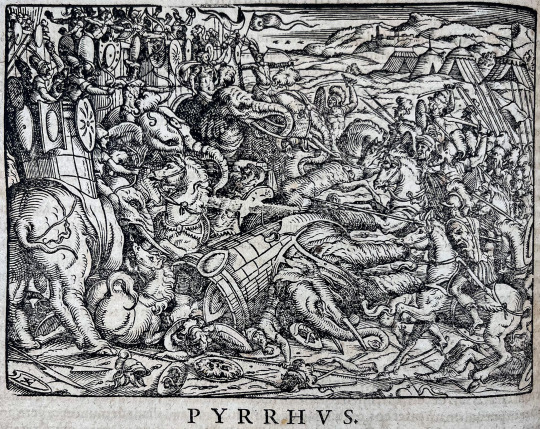
Battle between two armies, one on horseback and the other on war elephants. This generic illustration is repeated for Plutarch’s Life of Alexander (the Great) and Life of Pyrrhus (of Epirus). The former famously fought against forces that used elephants; the latter notably used them in battle.

As a change of pace from all the foregoing imagery of bloodshed and gore, we'd like to end with this elaborate woodcut of Aristotle seated at a table of scholars. Aristotle is not among the lives covered in the Bioi paralleloi, but this edition adds a brief biography of the philosopher by Guarino Veronese.
Images from: Plutarch. Vitae illustrium vivorum Graecorum et Romanorum. Frankfurt am Main: Sigmund Feyerabend, 1580. Catalog record: https://bit.ly/3DUnWhl
61 notes
·
View notes
Text

Francesco Nonni (1885 - 1975) ~ Saint Sebastian, woodcut, 1924.
#woodcutwednesday
22 notes
·
View notes
Text
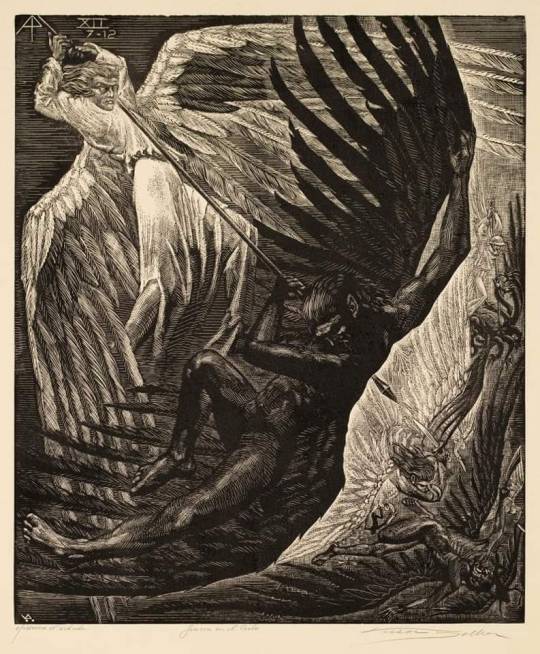
War in Heaven from series Apocalypse (Book of Revelation) by Victor Delhez, 1957
#woodcutwednesday
6 notes
·
View notes
Text
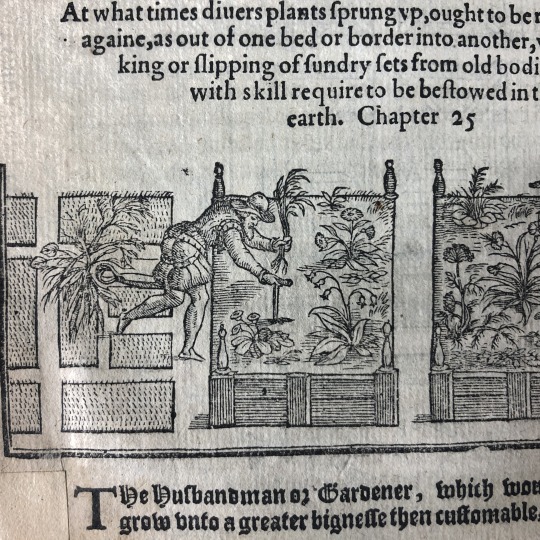
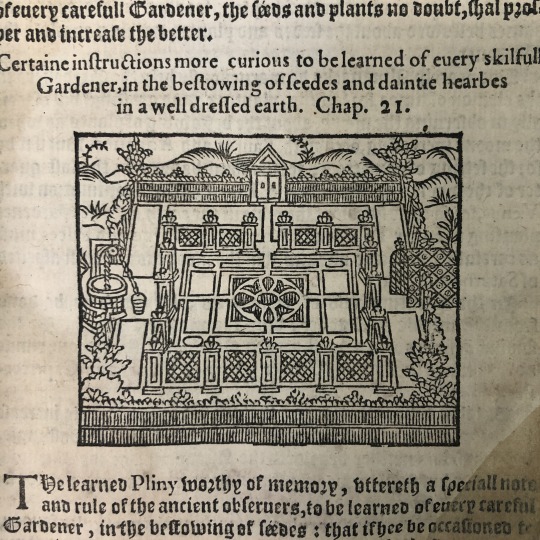

We are celebrating National Garden Week with these wonderful woodcuts from The Gardeners Labyrinth. Originally published in 1577, this popular gardening manual covered everything from seed selection to watering to landscaping, and also included a section on the medicinal and health benefits of some plants.
Thomas Hill. The gardeners labyrinth. London: Henry Ballard, 1608.
#gardening#earlyprinting#woodcuts#woodcutwednesday#plants#herbalmedicine#rarebooks#specialcollections
89 notes
·
View notes
Text
In Praise of Chiaroscuro





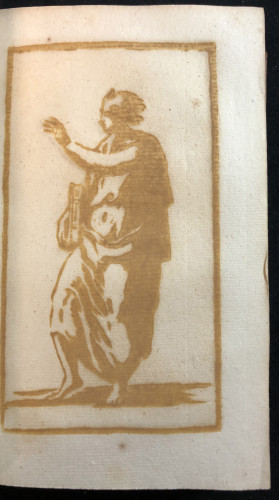

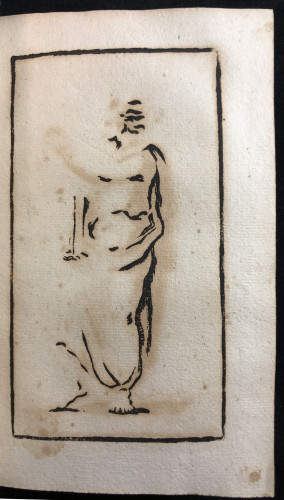
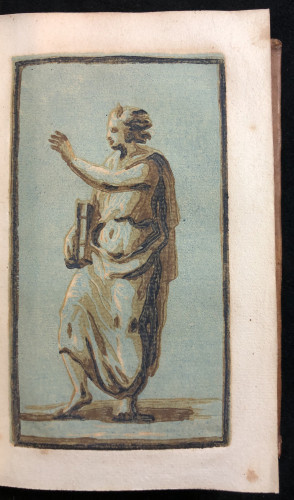
We are very pleased to announce the recent acquisition of the first comprehensive treatise ever published about the illustration technique of woodcut: Jean Michel Papillon. Traité historique et pratique de la Gravure en bois. 2 vols. (Pierre Guillaume Simon, 1766). Papillon’s manual is particularly remarkable for including a fully illustrated step-by-step depiction of the sixteenth-century technique of chiaroscuro. Read more!
#rare books#woodcut#WoodcutWednesday#book illustrations#illustrated books#Illustration#illustrations#illustration processes#chiaroscuro#papillon#rare printed books#rare illustrated books#acquisitions
17 notes
·
View notes
Photo

his #woodcutwednesday we share an image from one of the most unusual books in our collection, a small guide to Catholic prayers for protecting humans and livestock from evil forces, “Der Wahre Geistliche Schild”, published in Germany in 1840.
83 notes
·
View notes
Photo

It’s woodcut Wednesday! Can you identify the animal illustrated in this German translation of a book on materia medica by Italian physician and naturalist Pietro Andrea Mattoli (1501-1577)?
17 notes
·
View notes
Photo

🐟 *The Graphic Processes: Intaglio, Relief, Planographic* (1926) features beautiful prints presented in a portfolio format—not only is this an informative book, it is a work of art in itself! This title was acquired with assistance from the Rosengarten Family Fund. For more information: http://ow.ly/kBLX30jURNV Call number: Portfolio NE860 .H63 1926 http://ow.ly/KP2V30jURP6 * * * #kislakcenter #printmaking #woodcut #woodcutwednesday #relief #pennlibraries #japaneseprintmaking #artoftheday #pennlibraries #Rosengarten #fish #specialcollections
#relief#artoftheday#pennlibraries#rosengarten#printmaking#kislakcenter#woodcut#fish#specialcollections#japaneseprintmaking#woodcutwednesday
3 notes
·
View notes
Photo

The Coop
This early title page woodcut is intended to disparage the Hutterites, an Anabaptist Christian sect founded in the 16th century opposed by both mainstream Catholic and Protestant groups. The image would have us liken the group to pigeons or bats, but we aren’t persuaded. Instead, we find the image charming.
Fischer, Christoph Andreas, 1560- Der Hutterischen Widertauffer Taubenkobel .../ durch Christophorvm Andream Fischer D. Pfarrherrn zu Velsperg. Getruckt zu Ingolstatt : In der Ederischen Truckerey, durch Andream Angermeyr, 1607.
#rare books#anabaptists#woodcuts#bookhistory#illustration#17th century#radical reformation#hutterites#WoodcutWednesday
37 notes
·
View notes
Text

From: Winslow, Jacques-Bénigne, 1669-1760. An anatomical exposition of the structure of the human body. London : J. Knapton, 1763
QM28 .W77 1763
#woodcut#endpiece#mid18thcentury#1760s#english#flowers#fruits#strawberry#woodcutwednesday#rarebooks#specialcollections#libraryofva
242 notes
·
View notes
Photo

Working in progress #workinprogress #wip #woodcut #woodcutprint #woodcutwednesday #printmaking #print #graphicdesign #ntx575 (at Lewiston, Maine) https://www.instagram.com/p/B3ZNeP6FcCV/?igshid=1xlk1my1r5ycj
0 notes
Photo
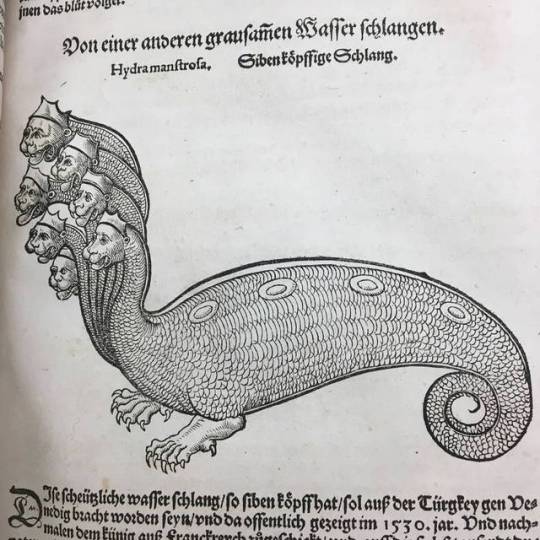
This week's #fantasticbeastsinthelibrary features the many-headed hydra in Gessner's 1557 Historia Animalium. Gessner doesn't comment on whether the animal was real or not, but instead describes mounted specimens he has seen as examples of the taxidermist's art. This image was probably derived from pictures of the seven-headed Beast of the Apocalypse, which circulated widely at the time.⠀ ⠀ MU Ellis Special Collections Rare Vault QL41 .G4715 1557 ⠀ ⠀ #hydra #monster #beast #fantasticbeasts #woodcut #woodcutwednesday #sixteenthcentury #bookillustration #histsci #illustration #art #history #specialcollections #rarebooks #librariesofinstagram #universityofmissouri #mizzou #ellislibrary #columbiamo (at Ellis Library)
#monster#columbiamo#sixteenthcentury#histsci#woodcut#mizzou#hydra#history#beast#ellislibrary#librariesofinstagram#bookillustration#art#fantasticbeasts#woodcutwednesday#rarebooks#universityofmissouri#specialcollections#fantasticbeastsinthelibrary#illustration
70 notes
·
View notes
Photo

Virginia Woolf's Monday or Tuesday (1921) on #woodcutwednesday, with 4 woodcuts by her sister Vanessa Bell #woodcut #virginiawoolf #vanessabell #mondayortuesday #rarebooks #bookstagram #sistersarespecial (at B & B Rare Books, Ltd.) https://www.instagram.com/p/BtRqhEcDXIR/?utm_source=ig_tumblr_share&igshid=1vr0xl8yck3hq
#woodcutwednesday#woodcut#virginiawoolf#vanessabell#mondayortuesday#rarebooks#bookstagram#sistersarespecial
1 note
·
View note
Photo
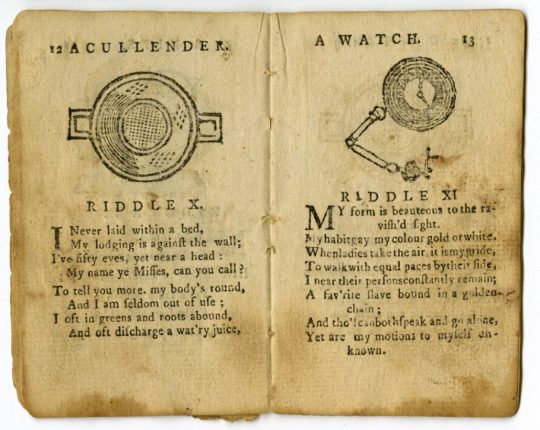
What with it being January, we've been thinking about getting a new calendar.
No, a calendar, not a cullender. (But we could probably use a new colander, too.)
Riddles and woodcuts from The Puzzling cap. Boston: T. Fleet, [1794]
54 notes
·
View notes